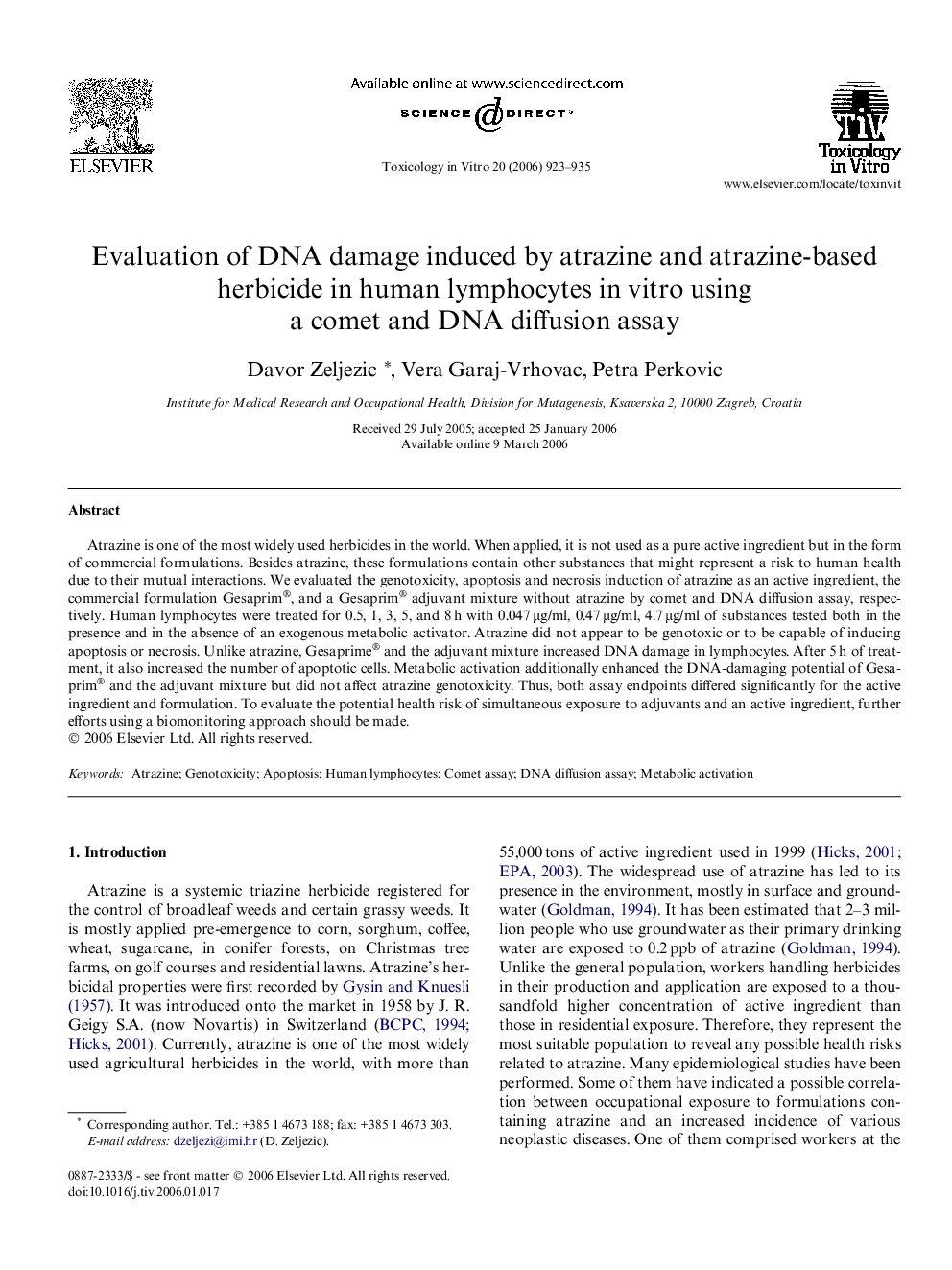| Article ID | Journal | Published Year | Pages | File Type |
|---|---|---|---|---|
| 2603464 | Toxicology in Vitro | 2006 | 13 Pages |
Atrazine is one of the most widely used herbicides in the world. When applied, it is not used as a pure active ingredient but in the form of commercial formulations. Besides atrazine, these formulations contain other substances that might represent a risk to human health due to their mutual interactions. We evaluated the genotoxicity, apoptosis and necrosis induction of atrazine as an active ingredient, the commercial formulation Gesaprim®, and a Gesaprim® adjuvant mixture without atrazine by comet and DNA diffusion assay, respectively. Human lymphocytes were treated for 0.5, 1, 3, 5, and 8 h with 0.047 μg/ml, 0.47 μg/ml, 4.7 μg/ml of substances tested both in the presence and in the absence of an exogenous metabolic activator. Atrazine did not appear to be genotoxic or to be capable of inducing apoptosis or necrosis. Unlike atrazine, Gesaprime® and the adjuvant mixture increased DNA damage in lymphocytes. After 5 h of treatment, it also increased the number of apoptotic cells. Metabolic activation additionally enhanced the DNA-damaging potential of Gesaprim® and the adjuvant mixture but did not affect atrazine genotoxicity. Thus, both assay endpoints differed significantly for the active ingredient and formulation. To evaluate the potential health risk of simultaneous exposure to adjuvants and an active ingredient, further efforts using a biomonitoring approach should be made.
